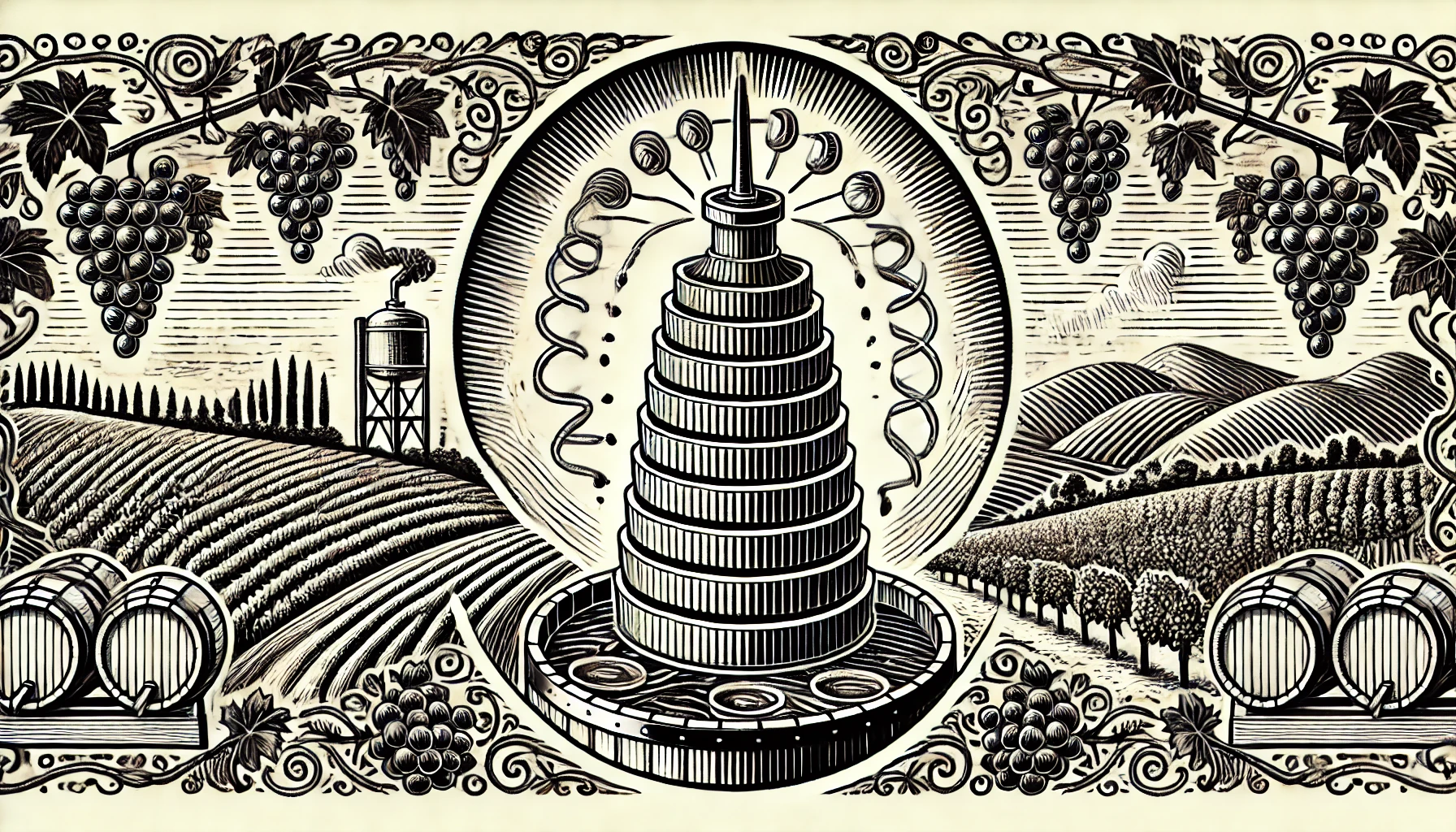
Spinning cone technology offers winemakers a precise method for reducing or removing alcohol from wine without sacrificing its flavor and aroma. This process uses a specialized piece of equipment called a spinning cone column to maintain the wine’s essential qualities while adjusting its alcohol content.
The process begins with heating the wine gently to release its volatile compounds—aromas and flavors that contribute to the wine’s character. After this step, the wine flows into the spinning cone column, a tall cylinder equipped with rotating metal cones. As these cones spin, they create a thin film of wine across their surface. The spinning motion allows for efficient separation of different components.
Steam or nitrogen gas flows upward through the spinning cone column. This gas helps lift the lighter, more volatile compounds—like delicate aromas and flavors—out of the wine. Winemakers collect these compounds separately, preserving them to maintain the wine’s original taste. This initial step helps prevent the loss of these aromatic elements during alcohol removal.
Reducing The Wine’s Alcohol Content
With the flavors set aside, the next phase focuses on reducing the wine’s alcohol content. The wine passes through the spinning cone column again, allowing the alcohol to evaporate while leaving behind heavier flavor components. Winemakers can run the wine through the column multiple times, adjusting the level of alcohol removed based on their desired outcome.
After removing the alcohol, winemakers reintroduce the previously collected aromas and flavors back into the wine. This step ensures that the final product retains its original complexity and character, even though it now contains less alcohol or none at all.
Spinning cone technology stands out because it works at lower temperatures than traditional distillation methods. This is making it gentler on the wine’s structure. This technology allows for a more balanced and nuanced flavor profile. It ensures that low-alcohol and no-alcohol wines offer an authentic wine-drinking experience. Many winemakers rely on this process to cater to consumers who seek mindful drinking options without compromising on taste.
Curious about more wine terms and insights? Visit our Wine Wiki section and explore the basic wine terms for expert definitions and tips!
[…] home! While it won’t be exactly like the professionally dealcoholized versions made with spinning cone technology, there are a few DIY methods that can help you get […]